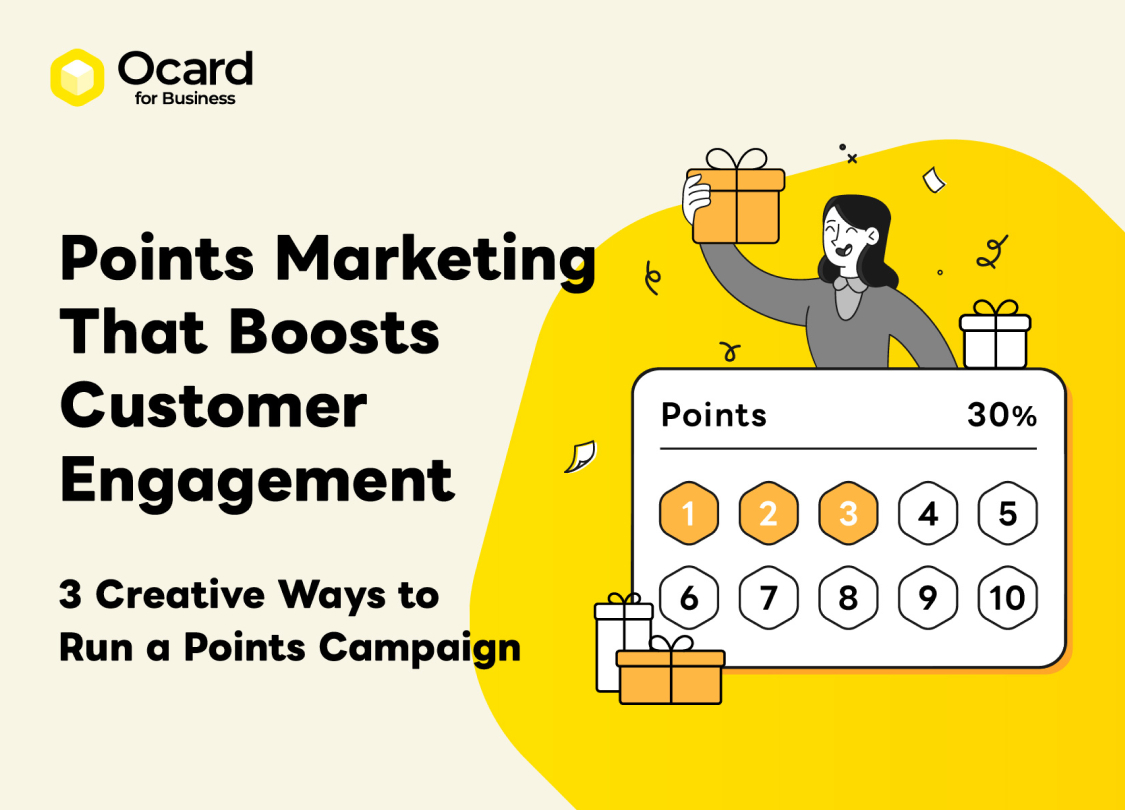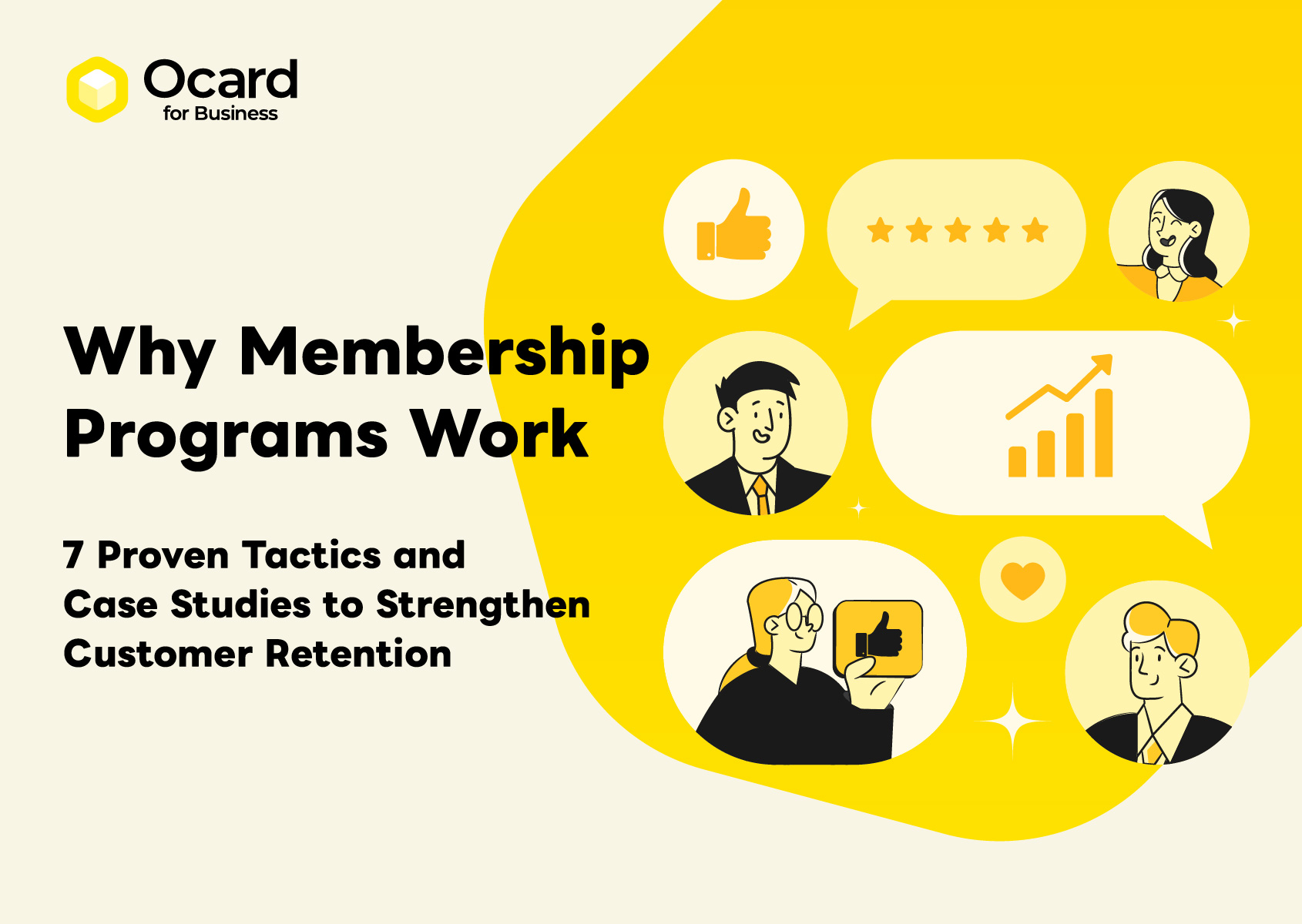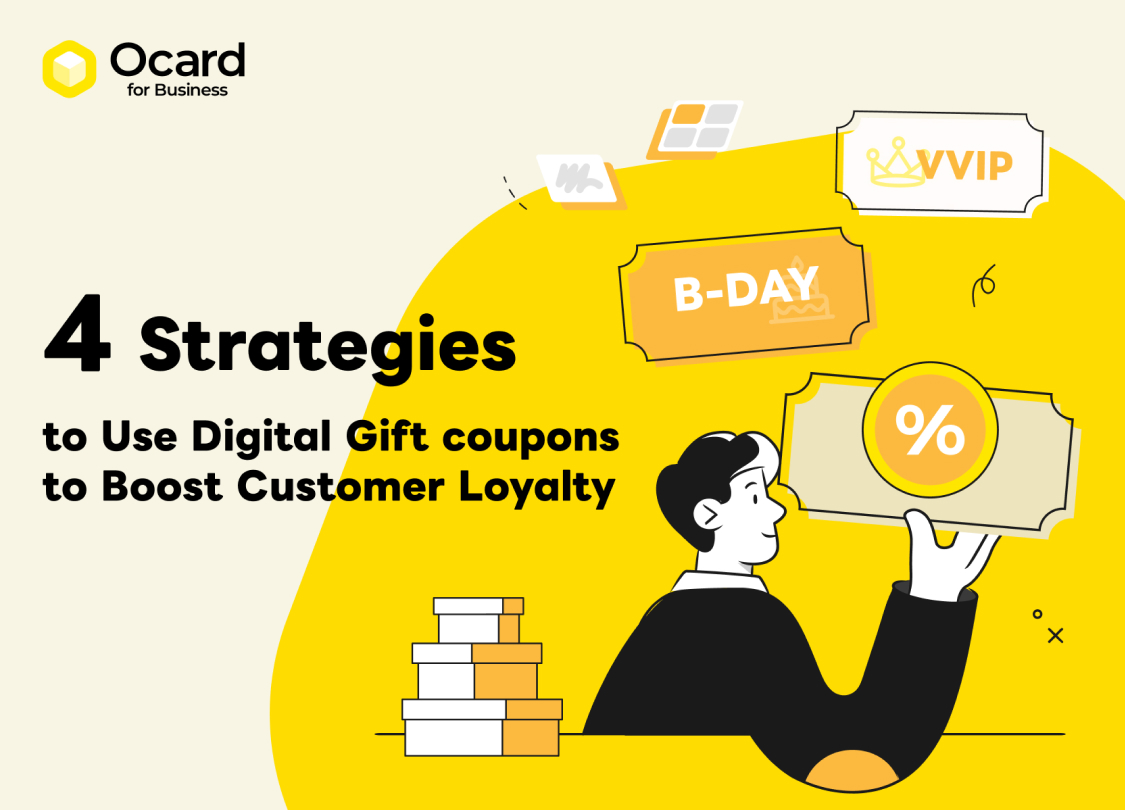
[Case Study] How to Use Gamified CRM Marketing to Boost Customer Loyalty and Drive Repeat Purchases
Table of Contents
ToggleAs market competition continues to intensify, brands are shifting their focus from one-time transactions to building long-term relationships with customers. Gamified marketing, an innovative strategy that blends game mechanics with brand interaction, not only makes engagement more fun, but also drives participation, enhances user experience, collects valuable customer data, and boosts conversion rates. The result? Stronger customer stickiness and brand loyalty.
In this article, Ocard takes a deep dive into the concept of gamified marketing, how it can be integrated into CRM-driven customer engagement, and the step-by-step strategies behind successful campaigns. Discover how brands are using gamification to create highly engaging experiences that lead to repeat purchases and lasting loyalty.
What Is Gamification Marketing?
Gamification is the practice of applying game design principles and elements in non-game contexts. By incorporating interactive features like challenges, rewards, and achievements, it taps into people’s intrinsic motivations—such as competition, a sense of accomplishment, curiosity, and social connection—to encourage specific behaviors and generate value.
When these mechanics are applied to the marketing realm, it becomes Gamification Marketing. Brands can integrate elements like points, badges, missions, levels, leaderboards, lucky draws, and tier upgrades to make brand interactions more engaging and rewarding. This turns passive audiences into active participants who are more likely to connect with and stay loyal to the brand.
By adding gamification, businesses not only enhance the customer experience but also strengthen their brand relationships. Through ongoing and enjoyable interactions, brands can stay top-of-mind, increase customer stickiness and loyalty, and ultimately expand their influence in the market.
4 Key Benefits of Gamification Marketing

At its core, marketing is about building relationships with your audience. Traditional marketing methods tend to rely on one-way communication, delivering messages without encouraging much interaction. Even with data-driven targeting, user engagement often remains limited. This is where gamification marketing stands out—by transforming one-way messaging into two-way interactions through playful, game-like experiences that invite users to participate actively.
This shift not only changes customer behavior but also brings long-term value to brands across four key areas:
1. Boosts Customer Engagement
Interactive challenges and reward systems keep customers engaged and coming back. For example, completing missions to earn rewards or checking in daily to accumulate points encourages frequent participation and sustained interest.
2. Strengthens Emotional Connection and Brand Loyalty
Personalized tasks, achievements, badges, and level-up systems foster a sense of belonging and brand identification. These emotional touchpoints help cultivate long-term loyalty and deeper engagement with your brand.
3. Enables Natural and Non-Intrusive Data Collection
Gamified experiences allow brands to gather customer preferences and behavioral data organically. This reduces resistance and lays the foundation for personalized marketing and highly relevant product recommendations.
4. Increases Click-Through Rates and Conversion Performance
The fun and interactive nature of gamified campaigns grabs attention and drives action. In fact, studies show that gamification can increase click-through rates by up to 40%, significantly boosting purchase intent, referrals, and participation—ultimately optimizing every stage of your marketing funnel.
How to Apply Gamification Marketing in CRM: Start with the Customer Lifecycle
In marketing strategy, one of the most important goals is to increase Customer Lifetime Value (CLV)—not just because it reflects the total revenue a customer brings, but because it’s a core indicator of long-term brand health. By segmenting customers based on where they are in their lifecycle journey, brands can design more targeted, engaging, and effective interaction strategies.
The full customer lifecycle typically includes five key stages: Awareness → Consideration → Purchase → Retention → Advocacy. Integrating gamification mechanics into each stage of this journey not only encourages ongoing engagement, but also drives action through rewards and incentives.
Below, we explore gamified marketing strategies tailored to each stage of the customer lifecycle:
How Gamification Enhances Every Stage of the Customer Lifecycle
Psychology
- Lucky Draws: Incentivize in-store visits
- Point Collection: Join membership, scan to collect points
- Leaderboards: List frequent buyers, invite top-ranking customers to create buzz and build goodwill
- Mission Challenges: Guide new users with tasks and reward completion.
- Badge Collection: "Browse products in-store and add to favorites to earn related badges.
- Augmented Reality (AR): Potential customers experience positive progress during trials or interactions
- Mission Challenges: Set time-limited or multiplier missions to boost urgency
- Leaderboards: Reward top spenders with a chance to be featured or win prizes
- Tiered System: Upgrade status based on spending or engagement
- Exclusive Benefits: Birthday gifts, VIP perks, early access
- Survey Rewards: Incentivize feedback with small gifts
- Referral Program (MGM): Reward both referrer and referee
- Leaderboards: Monthly rankings to gamify referrals
- Social Sharing: Share for points or prizes
4 Steps to Building a Successful Gamification Marketing Strategy
To make gamification marketing truly effective, it’s not just about making things fun—it’s about aligning brand goals, customer motivations, and conversion actions into a well-designed experience. Here are four essential steps to crafting a gamification strategy that delivers real results:
Step 1: Set Clear Goals to Guide Customer Behavior
Every effective gamified campaign starts with one question: What specific customer behavior do you want to drive? Common goals include:
- Attracting new members (customer acquisition)
- Increasing brand awareness or product exposure
- Promoting product trials or driving first-time purchases
- Boosting repeat purchases and average order value
- Encouraging social and customer engagement
Once the goal is defined, set measurable KPIs—such as increasing sign-up rates, boosting member engagement, improving repurchase frequency, or raising your NPS score. These metrics will guide your gamification design and help evaluate campaign performance.
Step 2: Design Meaningful Rewards to Drive Motivation
In gamification, rewards are the engine of participation. They should be enticing, aligned with your brand values, and provide a sense of accomplishment. Brands can create tiered or mixed reward systems based on the difficulty of tasks, ensuring that users feel both challenged and satisfied.
Step 3: Define Specific Actions or Missions to Lower Participation Barriers
Customers are more likely to engage when they clearly understand what tasks to complete and feel confident that they can complete them. Transparent rules, clear objectives, and well-communicated rewards increase the likelihood of interaction.
Step 4: Visualize Progress and Give Instant Feedback
The key to keeping users engaged is helping them see their progress over time. Real-time visual elements like progress bars, checklists, or achievement notifications help boost motivation and improve retention. Progress visualization not only makes the experience more immersive but also encourages users to complete their journey.
10 Popular Gamification Marketing Tactics (with Real Brand Examples)
Once you’ve mastered the 4-step gamification strategy and understand how to set goals and spark customer engagement, the next question is: Which gamified elements are most effective for achieving your marketing objectives?
To help you get started, here are 10 widely used gamification tactics, each commonly adopted by brands to drive engagement, loyalty, and conversion—along with real-world examples of how they’re applied in practice:
Overview of Gamification Marketing Elements and Their Applications
- Boost daily activity
- Encourage repeat visits and app retention
- Cultivate user habits
- Create incentive loops
- Guide new users and increase retention for App
- Increase App Open Rate and User Engagement
- Help Brands Acquire New Customers and Drive First Purchases
- Activate Members and Increase Retention Rate
- Short-term Promotion (Holiday)
- Enhance Customer Engagement with the Brand
- New Series Promotion
- Stimulate Repeat Purchases and Accumulate Spending
- Drive Traffic to New Stores and Regional Promotions
- Enhance In-store Experience and Brand Loyalty
- Targeted Conversion Stimulus
- Increase Repeat Purchase Rate and Store Visit Frequency
- Enhance Customer Lifetime Value (CLV)
- Collect Customer Data
- Increase App Usage Rate
- Promote New Products and Product Bundle Sales
- Increase User Retention and Engagement
- Enhance User Loyalty
- Collect User Running Data
- Community Engagement Marketing
- Strengthen the Brand’s Association with Sports
- Increase Membership and Collect Targeted Leads
- Understand Customer Profiles and Preferences
- Enhance Customer Engagement and Interaction Rate
- Strengthen Post-Purchase Engagement Opportunities
- Increase User Retention Rate
- Encourage Competition and Community Interaction
- Enhance Brand Reputation and Referrals
- Extend App Usage Duration
- Collect User Learning Data
- Enhance Sense of Engagement and Brand Experience
- Guide to Actual Purchase Conversion
- Increase Customer Stickiness and Repeat Purchase Rate
- Differentiated Experience
- Collect Customer Preference Data
- Increase Product Trial Rate
- Increase Interaction Stickiness
- Collect Customer Data for Future Recommendations
- Improve Conversion Rate
Creating Impactful Gamified Marketing with Ocard CRM
Ocard CRM combines four key strategies—gamification, automation, precision marketing, and data-driven insights—to help brands evolve from simply “managing members” to driving long-term customer value. With a modular and highly flexible architecture, the system lowers the entry barrier for brands to launch gamified campaigns while enabling systematic data accumulation for full-funnel member engagement—from interaction to conversion.
Whether you’re designing in-store missions to spark the first interaction, using a point-based system to increase user stickiness, or encouraging repeat purchases through a tiered membership structure, Ocard CRM adapts seamlessly to different goals and scenarios. Campaigns can be deployed quickly and adjusted in real-time.
Among the many features available, the Lucky Draw Module and Survey Module stand out as powerful tools for both engagement and insights. They not only boost participation and interaction rates but also collect valuable first-party data—fueling retargeting efforts and enabling more precise audience segmentation.
In the following sections, we’ll explore how these two modules work, share popular use cases, and show you how to unlock the full potential of CRM-driven marketing.
1. Lucky Draw Module
1.1 Spin-the-Wheel Game
Inspired by the concept of a Russian roulette, this game combines dynamic animations and sound effects to deliver a sense of anticipation and fun. It allows for a larger variety of prizes and incorporates chance-based outcomes, making it one of the most stimulating and exciting formats.
👉 Marketing objectives: Acquire new members, boost repeat purchases, encourage social sharing
1.2 Pick-One-of-Four Game
A cross between a mini-game and a personality quiz, this format invites users to actively select one of four options, offering a higher degree of user involvement while still maintaining an element of surprise.
👉 Marketing objectives: Enhance brand engagement, reinforce brand identity, promote new product launches
1.3 Scratch Card Game
Simulating the tactile experience of a real scratch-off card, this game uses finger-swiping motions to “scratch and reveal,” creating a strong sense of surprise and delight.
👉 Marketing objectives: Drive limited-time offers, increase repurchase rates, engage members in exclusive campaigns
Want to explore more ways to integrate lucky draw games with your CRM strategy? Contact us to learn more!
2. Survey Module

When gamification is applied to surveys—through incentives, participatory design, and real-time feedback—it significantly boosts completion rates while enriching the overall user experience. Customers enjoy a process of “play to engage, answer to win”, making every interaction feel rewarding and thoughtful, which strengthens brand affinity and loyalty.
For brands, the survey becomes much more than a one-way data collection tool. It evolves into an interactive journey that generates engagement, uncovers genuine insights, and fuels remarketing. Gamified surveys successfully balance customer motivation with business goals, forming a powerful bridge between data operations and brand experience.
👉 Marketing objectives: Attract new members, gain customer insights, recommend products or trials, nurture customer relationships (e.g., satisfaction surveys), and boost repurchase through remarketing
Conclusion: Build High Engagement and Loyalty with Gamified Marketing
Gamified marketing is no longer just a fun add-on—it’s a core strategy for building brand competitiveness. By creating well-crafted interactive experiences that reward users with a sense of achievement and value, brands can increase engagement, drive conversions, and foster deeper emotional connections. The result? Higher customer retention, stronger repeat purchases, and long-term brand loyalty.


